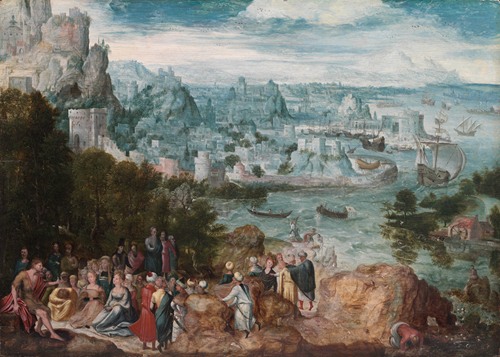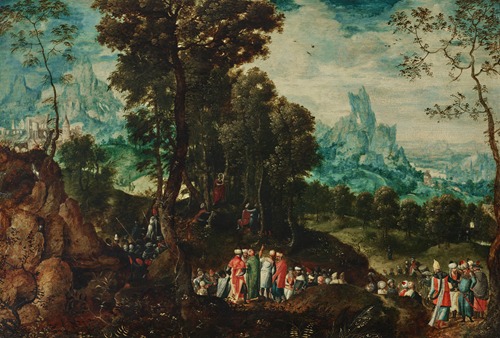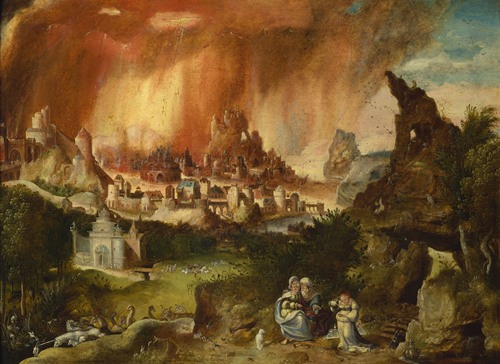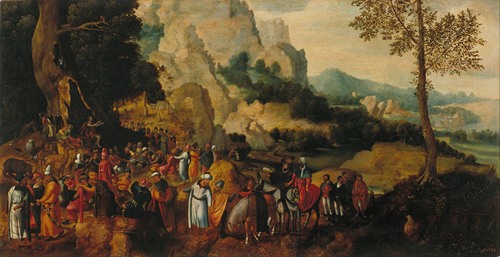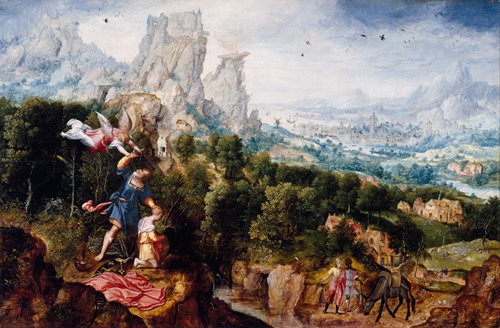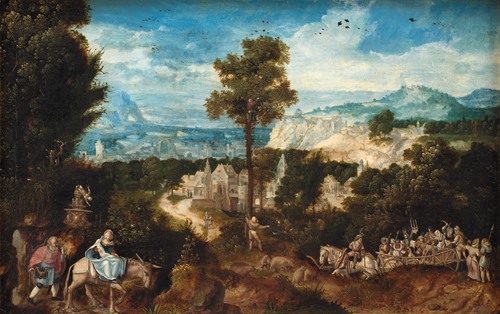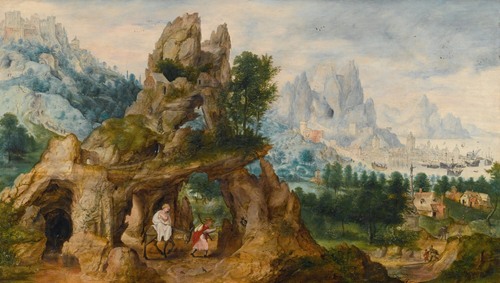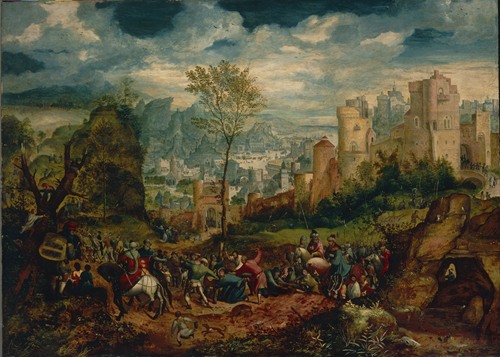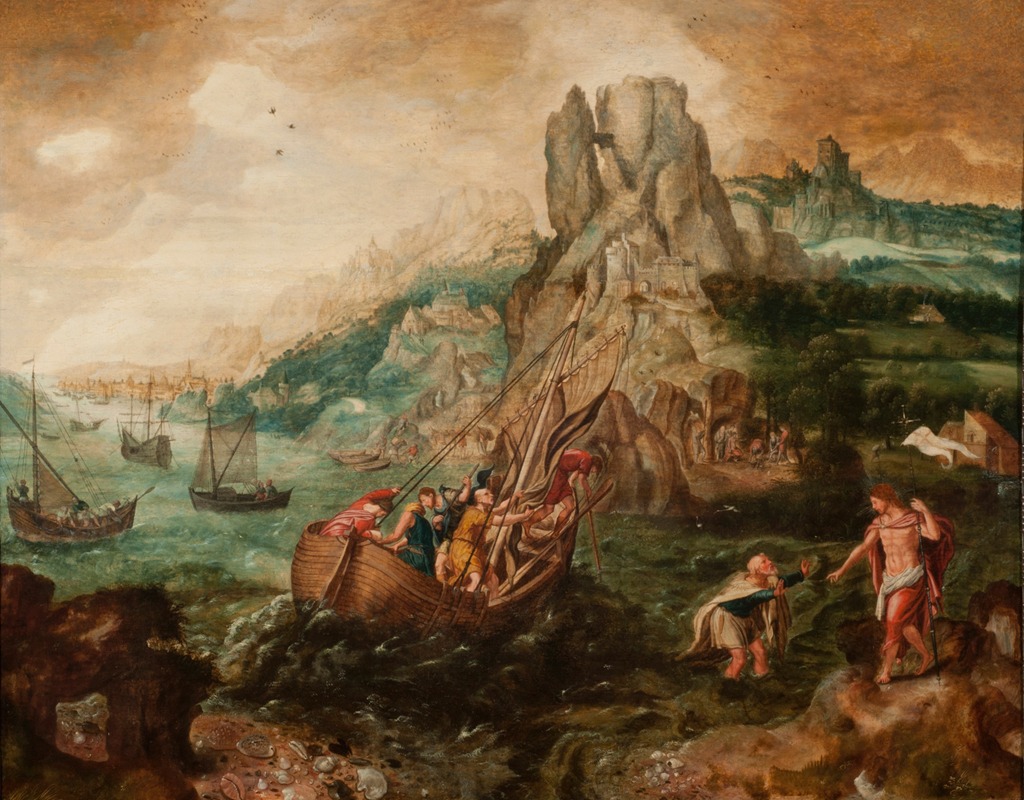
Herri met de Bles, also known as Henri Blès, Herri de Dinant, Herry de Patinir, and il Civetta, was a Flemish Northern Renaissance and Mannerist landscape painter, native of Bouvignes or Dinant (both in present-day Belgium).
He contributed, along with Joachim Patinir and Lucas Gassel, to a distinct style of Northern Renaissance landscape painting basically originating from Gerard David's works and combining small history or religious scenes into compositions defined by perspective and atmospheric effects. They all painted landscapes seen from a high viewpoint and rocky masses. They did not aim to create a realistic depiction but an atmospheric effect. Herri met de Bles always included a few small figures involved in a religious episode or everyday activities such as mining, agriculture or trade.
The Netherlands Institute for Art History suggests that de Bles was born in Dinant in circa 1510. Very little is known about the artist. He is believed to be identical to a certain Herry de Patenir who joined Antwerp's Guild of St. Luke in 1533 as a painter. He may have been related to the landscape painter Joachim Patinir, perhaps as his nephew, although he may not have trained under him because of their age difference.
He may have visited Ferrara, Italy and died there, getting buried in the church of San Giacomo, as an Italian source mentions it. His work was popular in Italy, where he was known as 'il Civetta' because of the little owl that often appears in his paintings, usually in a hollow tree or in a cavity between some rocks. The 17th-century biographer Karel van Mander regarded this motif as his signature. The name Herri met de Bles translates literally from Dutch as Herri with the blaze and was reportedly given him because of his characteristic white forelock. He may have been the pupil of Lucas Gassel, who was at least 10 years his senior, at some point for the similarities between their works about the subject of David an Bathsheba are significant. Besides, they are depicted together (along with Hans Holbein) in a 1764 coloured engraving by Jan l'Admiral with Gassel being in the foreground and de Bles shown in the more obscure lower right corner.
The notname of "Pseudo Bles" was invented to cover a number of Antwerp Mannerist paintings that had previously been attributed to de Bles, after it was recognised that this was wrong. In 1915 by Max Jakob Friedländer in his work Die Antwerpener Manieristen von 1520, made a first attempt to put order in the growing number of works from the Netherlands that were catalogued under the 'name of embarrassment 'pseudo-Herri met de Bles' (usually now "Pseudo Bles").
The renowned Dutch art institute and research center, RKD places him as still active in Antwerp in 1566, based on recently discovered contemporary documents.
